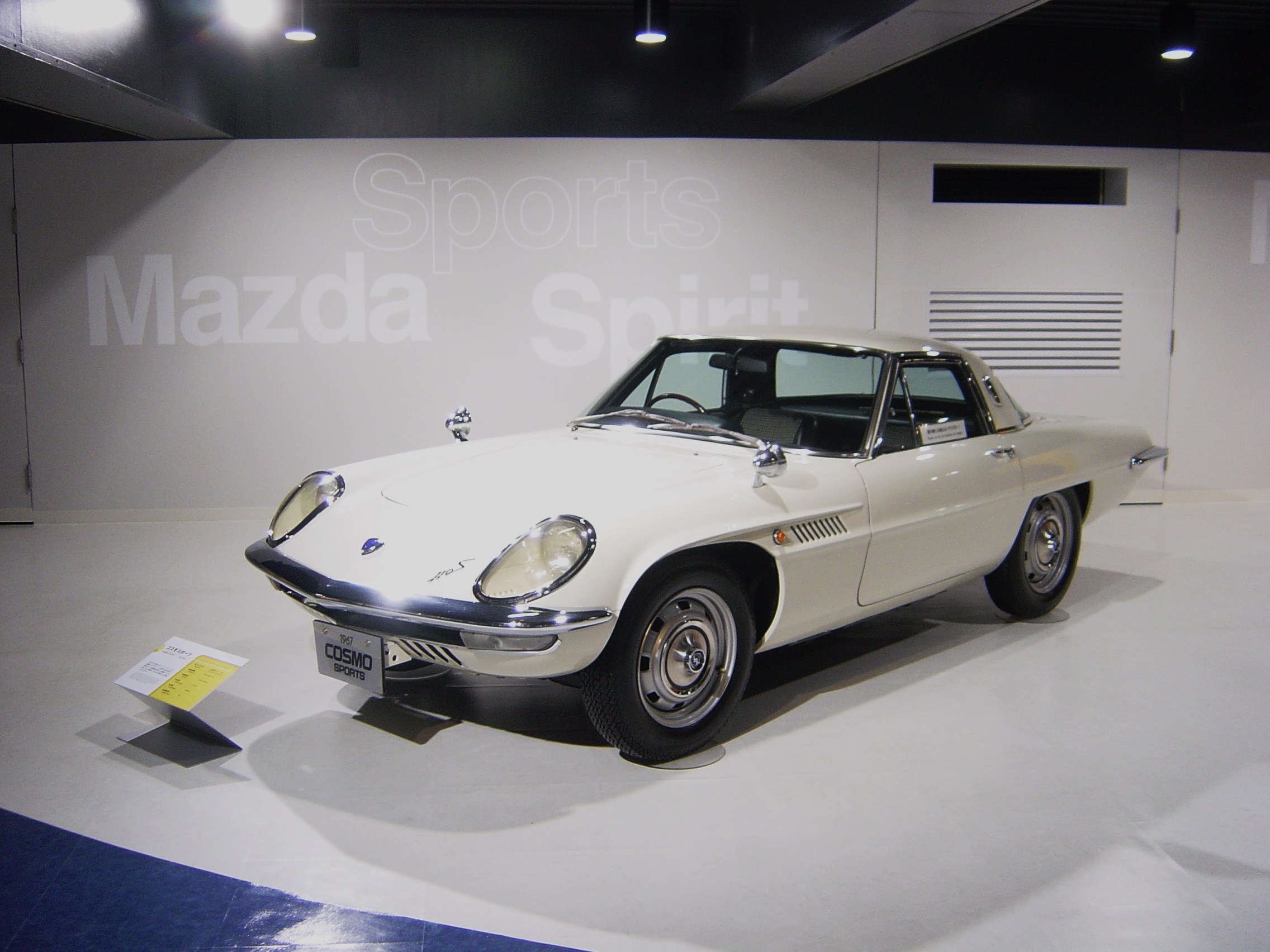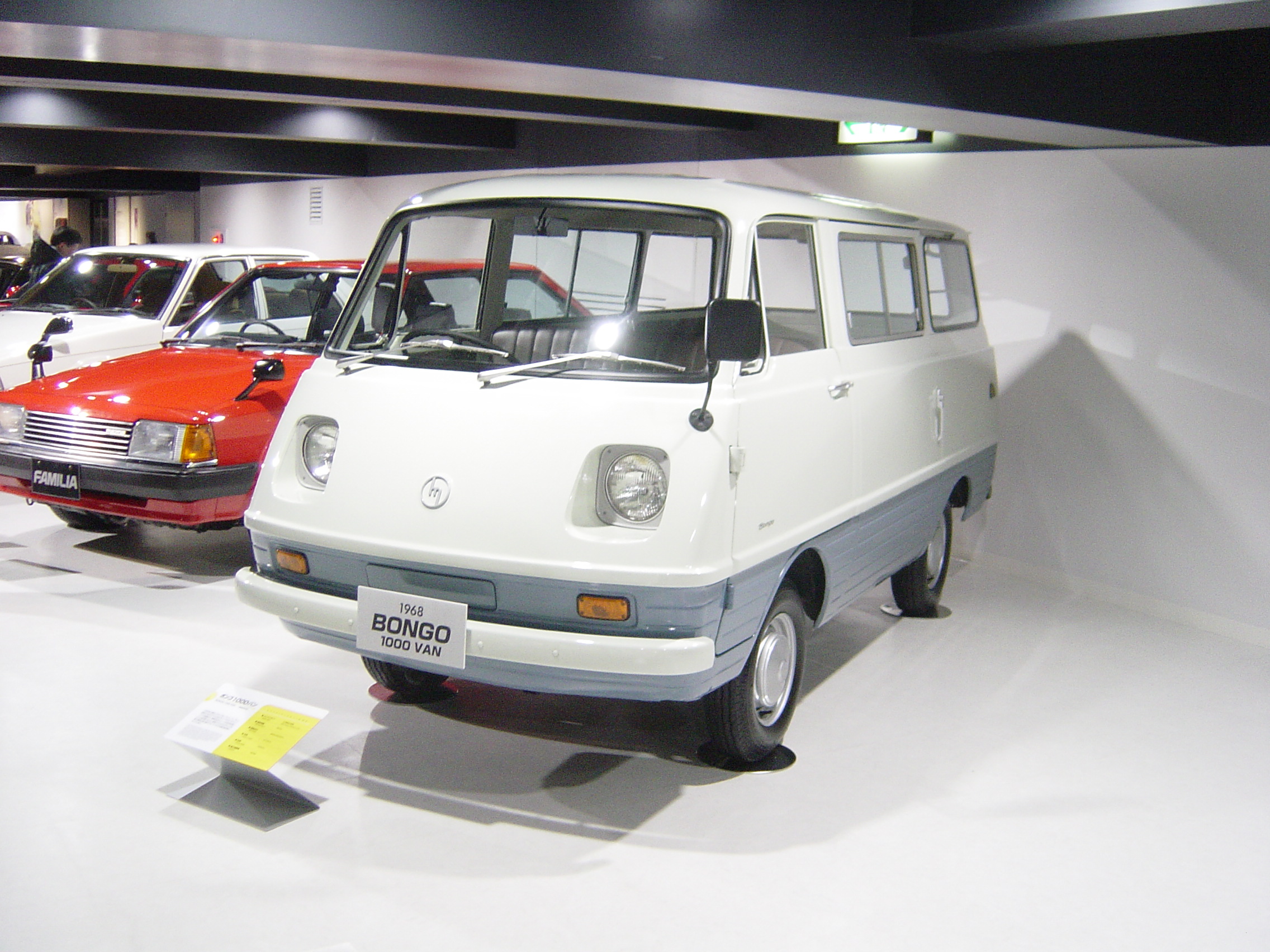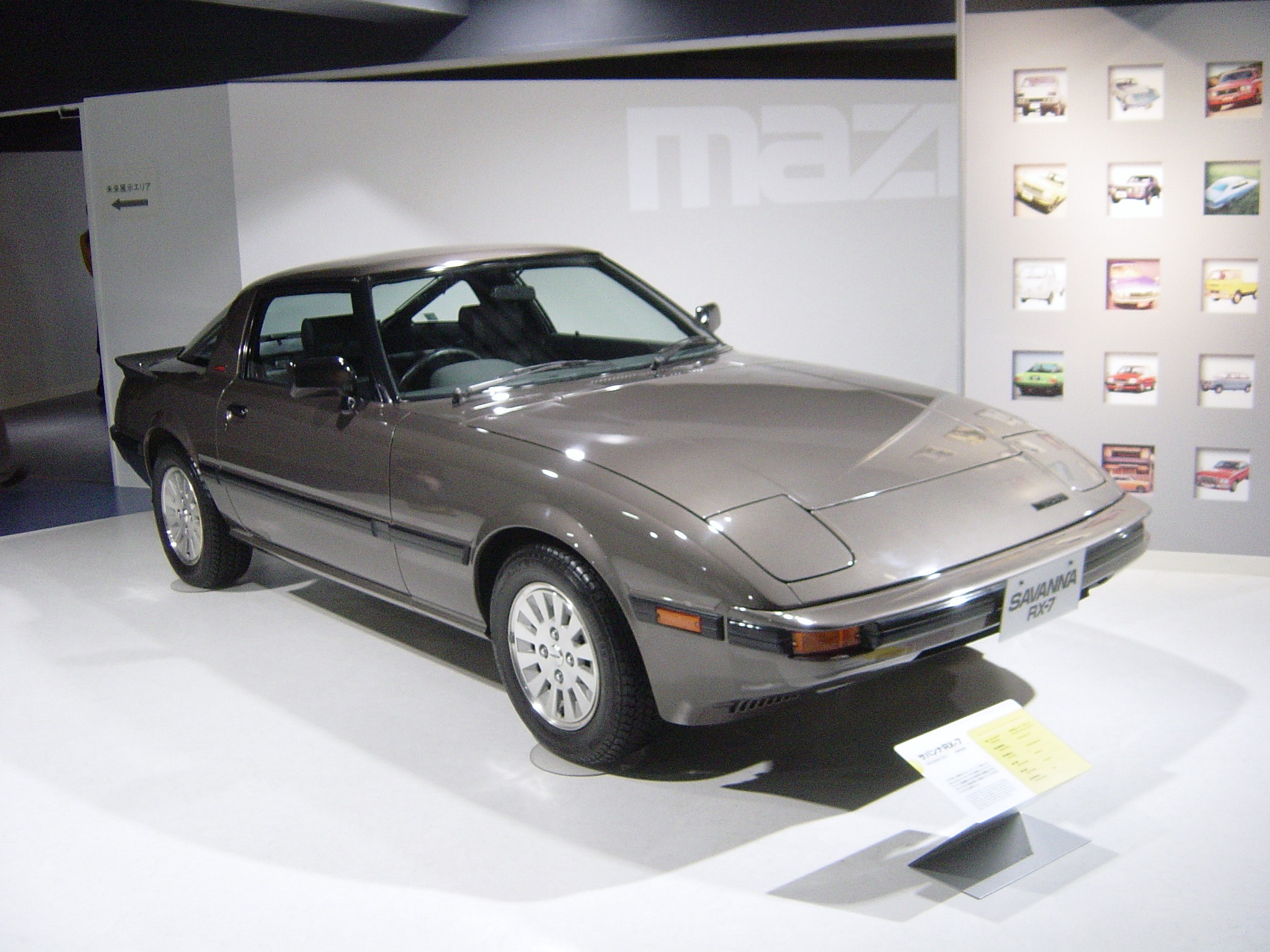|
Mazda C Engine
The C family was Mazda's first large piston engine design. It is not certain whether Mazda has a name for this collection of engines, and it is uncertain precisely which ones are related. PC The PC engine featured a bore and stroke. It was an eight-valve SOHC design and was designed for rear wheel drive longitudinal applications. The PC produced and in the export market 323. Applications: * 1965–1967 Mazda Familia 1000 Coupé * 1977–1983 Mazda Familia/323 (FA4P) TC The TC had a bore and stroke; a bored and stroked version of the ''PC''. Used in the 1970, 1973, and 1977 Mazda Familia, and the 1979 - 1984 Mazda Bongo / Ford Econovans as the smaller engine option, the larger being the 1.6 L Mazda NA engine. For 1977 a new, prize-winning lean burn version of the TC was developed for the new FA-series Familia, using a carburetor with an EGR valve. Thus equipped, the TC weighs . Applications: * 1970–1977 Mazda Familia/Familia Presto/Mazda 1300 * 1971–1978 Maz ... [...More Info...] [...Related Items...] OR: [Wikipedia] [Google] [Baidu] [Amazon] |
Mazda
is a Japanese Multinational corporation, multinational automotive manufacturer headquartered in Fuchū, Hiroshima (town), Fuchū, Hiroshima Prefecture, Hiroshima, Japan. The company was founded on January 30, 1920, as Toyo Cork Kogyo Co., Ltd., a cork-making factory, by Jujiro Matsuda. The company then acquired Abemaki Tree Cork Company. It changed its name to Toyo Kogyo Co., Ltd. in 1927 and started producing vehicles in 1931. Mazda is known for its innovative technologies, such as the Wankel engine, the SkyActiv platform, and the Kodo Design language. It also has a long history of motorsport involvement, winning the 24 Hours of Le Mans in 1991 with the rotary-powered Mazda 787B. In the past and present, Mazda has been engaged in alliances with other automakers. From 1974 until the late 2000s, Ford Motor Company, Ford was a major shareholder of Mazda. Other partnerships include Toyota, Nissan, Isuzu, Suzuki and Kia. In 2023, it produced 1.1 million vehicles globally. The ... [...More Info...] [...Related Items...] OR: [Wikipedia] [Google] [Baidu] [Amazon] |
Mazda Bongo
The , also known as Mazda E-Series, Eunos Cargo, and the Ford Econovan, is a cabover van and pickup truck manufactured by the Japanese automobile manufacturer Mazda since 1966. The Bongo name was also used for the #Friendee, Bongo Friendee, which is not a cabover design. It has been built with rear-, middle-, as well as front-mounted engines. It also formed the basis for the long-running Kia Bongo range. It is named for the African Bongo (antelope), Bongo, a type of antelope. __TOC__ First generation (1966–1975) Mazda first introduced its compact van, small van, the Bongo, in May 1966. It featured a rear-mounted 782 cc water-cooled Overhead valve engine, OHV SA 4-stroke engine rear wheel drive, driving the rear wheels. The rear-engined Bongo was produced in two versions from 1968, as the F800 was joined by the bigger-engined F1000. This has a 987 cc Mazda OHV engine#PB, PB overhead valve inline-four engine with at 5500 rpm. The chassis code for the 1-litre ... [...More Info...] [...Related Items...] OR: [Wikipedia] [Google] [Baidu] [Amazon] |
Mazda Engines
is a Japanese multinational automotive manufacturer headquartered in Fuchū, Hiroshima, Japan. The company was founded on January 30, 1920, as Toyo Cork Kogyo Co., Ltd., a cork-making factory, by Jujiro Matsuda. The company then acquired Abemaki Tree Cork Company. It changed its name to Toyo Kogyo Co., Ltd. in 1927 and started producing vehicles in 1931. Mazda is known for its innovative technologies, such as the Wankel engine, the SkyActiv platform, and the Kodo Design language. It also has a long history of motorsport involvement, winning the 24 Hours of Le Mans in 1991 with the rotary-powered Mazda 787B. In the past and present, Mazda has been engaged in alliances with other automakers. From 1974 until the late 2000s, Ford was a major shareholder of Mazda. Other partnerships include Toyota, Nissan, Isuzu, Suzuki and Kia. In 2023, it produced 1.1 million vehicles globally. The name Mazda was derived from Ahura Mazda, the god of harmony, intelligence and wisdom in Z ... [...More Info...] [...Related Items...] OR: [Wikipedia] [Google] [Baidu] [Amazon] |
Japanese Industrial Standards
are the standardization, standards used for industrial activities in Japan, coordinated by the Japanese Industrial Standards Committee (JISC) and published by the Japanese Standards Association (JSA). The JISC is composed of many nationwide committees and plays a vital role in standardizing activities across Japan. History In the Meiji (era), Meiji era, private enterprises were responsible for making standards, although the Japanese government too had standards and specification documents for procurement purposes for certain articles, such as munitions. These were summarized to form an official standard, the Japanese Engineering Standard, in 1921. During World War II, simplified standards were established to increase matériel output. The present Japanese Standards Association was established in 1946, a year after Japan's defeat in World War II. The Japanese Industrial Standards Committee regulations were promulgated in 1946, and new standards were formed. The Industrial Sta ... [...More Info...] [...Related Items...] OR: [Wikipedia] [Google] [Baidu] [Amazon] |
Mazda 626
__NOTOC__ Year 626 (Roman numerals, DCXXVI) was a common year starting on Wednesday of the Julian calendar. The denomination 626 for this year has been used since the early medieval period, when the Anno Domini calendar era became the prevalent method in Europe for naming years. Events By place Byzantine Empire * Siege of Constantinople (626), Siege of Constantinople: A horde of Avar Khaganate, Avars, consisting of about 80,000 men (including large contingents of Slavs, Bulgars, and other "barbarians"), attack the walls of Constantinople. A small Persian army arrives on the Bosphorus, on the Asia Minor, Asiatic side. The Walls of Constantinople#Theodosian Walls, Theodosian Walls are stormed with the most up-to-date siege equipment, in the form of traction trebuchets. The Avars also have mobile armoured shelters (medieval 'sows') and Siege tower#Medieval and later use, siege towers; the latter are covered in Hide (skin), hides for fire protection. The defense of the capit ... [...More Info...] [...Related Items...] OR: [Wikipedia] [Google] [Baidu] [Amazon] |
Japanese Domestic Market
The term "Japanese domestic market" ("JDM") refers to Japan's home market for vehicles and vehicle parts. Japanese owners contend with a strict motor vehicle inspection and grey markets. JDM is also incorrectly used as a term colloquially to refer to cars produced in Japan but sold in other countries. The average age of JDM cars is 8.7 years, ranking 9th in a survey of 30 of the top 50 countries by gross domestic product. According to the Fédération Internationale de l'Automobile, a car in Japan travels a yearly average of over only , less than half the U.S. average of . Japanese domestic market vehicles may differ greatly from the cars that Japanese manufacturers build for export and vehicles derived from the same platforms built in other countries. The Japanese car owner looks more toward innovation than long-term ownership which forces Japanese carmakers to refine new technologies and designs first in domestic vehicles. For instance, the 2003 Honda Inspire featured the fi ... [...More Info...] [...Related Items...] OR: [Wikipedia] [Google] [Baidu] [Amazon] |
Japan Automobile Manufacturers Association
, or JAMA, is a trade association with its headquarters in Tokyo, Japan. It was founded in April 1967 and serves as a platform for the automakers of Japan to share technological developments and management practices. There are currently 14 member companies, manufacturing not only cars, but trucks and motorcycles as well. The organization also deals with the manufacturing and distribution of vehicle parts around the world. Together, the companies of JAMA hold a vast share of the markets in the United States, Europe, and many developing countries. JAMA also has offices located in Beijing, Singapore, Washington, D.C. (US Office), Toronto (Canadian Office) and Brussels, Belgium (Europe Office). Members of JAMA *Daihatsu * Fuso * Hino *Honda *Isuzu * Kawasaki *Mazda *Mitsubishi *Nissan *Subaru *Suzuki *Toyota * UD * Yamaha Other brands of member companies The "Big Three" of Japan (Toyota, Nissan, and Honda), each have luxury divisions: Honda's ''Acura'' (created in 1986), Niss ... [...More Info...] [...Related Items...] OR: [Wikipedia] [Google] [Baidu] [Amazon] |
Mazda Capella
The Mazda Capella, also known as the 626 in Europe, North America and Southeast Asia, is a mid-size car that was manufactured by Mazda from 1970 until 2002. Sold in the Japanese domestic market under the Capella name, the vehicle was also commonly known in other major markets as the Mazda 626. Ford, Mazda's partner at the time, also used the Capella platform to create the Ford Telstar and Ford Probe. 4,345,279 of the 626 and Telstar models were sold worldwide. Designed to compete against Japanese mid-size stalwarts such as the Honda Accord, Toyota Corona, and Nissan Bluebird, the Capella was succeeded by the Mazda6 (Atenza) in 2002. The car was named after Capella, the brightest star in the constellation Auriga, the sixth-brightest in the night sky and the third-brightest in the northern celestial hemisphere, after Arcturus and Vega. __TOC__ First generation (1970–1978) The first Capella was introduced in May 1970 and lasted until 1978, and was introduced as an i ... [...More Info...] [...Related Items...] OR: [Wikipedia] [Google] [Baidu] [Amazon] |
Mazda Luce
The is an executive car that was produced by Mazda in Japan from 1966 until 1991. It was widely exported as the Mazda 929 from 1973 to 1991 as Mazda's largest sedan. Later generations were installed with luxury items and interiors as the Luce became the flagship offering. The Luce was replaced by the Mazda Sentia, Sentia in 1991 which was also exported under the Mazda 929, 929 nameplate. __TOC__ Etymology The name ''"wikt:luce, lu'ce"'' was taken from the Italian word for "light". SU/SV series (1966–1973) Following an agreement signed with Gruppo Bertone, Bertone in April 1962, the 1965 Luce 1500 show car was designed by Giorgetto Giugiaro of Italy. It was low and sharp, looking more like a contemporary BMW Bavaria than its smaller Mazda companion models, the Mazda Familia, Familia and the ''kei car'' Mazda Carol, Carol. The production version (SUA), started production in July 1966 and launched in August, had a higher roofline but retained the BMW-esque look. It wa ... [...More Info...] [...Related Items...] OR: [Wikipedia] [Google] [Baidu] [Amazon] |
Mazda E Engine
The iron-block, alloy head E family was an evolution of Mazda's xC design. It was released in June 1980 with the introduction of the first front-wheel drive Mazda Familias and Ford Lasers. Some later variants of the E5-powered Mazda Familia and Ford Laser in Japan incorporated a full-time 4WD drivetrain. All E engines were chain-driven, 8-valve SOHC. Notable features include siamesed cylinders, aluminium rocker arms and pistons, thin block walls, and single valve springs - all in the interest of reducing weight. E1 The E1 was found in the 1980–1985 Mazda Familia and Ford Laser. It used a bore x stroke with 9.2:1 compression ratio and produced and ( DIN). It was not replaced when the new Familia/323 appeared in 1985. The E1 was strictly intended for export markets where taxes based on engine size made this a popular alternative. It was never available in Japan, nor in North America or Australia. E3 The larger E3 displaces with a wider bore and the same 9.2:1 compressi ... [...More Info...] [...Related Items...] OR: [Wikipedia] [Google] [Baidu] [Amazon] |
Mazda GLC
The , also marketed prominently as the Mazda 323, Mazda Protegé and Mazda Allegro, is a small family car that was manufactured by Mazda between 1963 and 2003. The Familia line was replaced by the Mazda3/Axela for 2004. It was marketed as the ''Familia'' in Japan, which means "family" in Latin. For export, earlier models were sold with nameplates including: "800", "1000", "1200", and "1300". In North America, the 1200 was replaced by the Mazda GLC, with newer models becoming "323" and "Protegé". In Europe, all Familias sold after 1977 were called "323". The Familia was also rebranded as the Ford Laser and Ford Meteor in Asia, Oceania, Southern Africa, some Latin American countries and, from 1991, as the Ford Escort and Mercury Tracer in North America. In addition, the Familia name was used as the Mazda Familia Wagon/Van, a badge-engineered version of the Nissan AD wagon (1994–2017) and Toyota Probox (2018–present). Mazda Familias were manufactured in the Hiroshima Pl ... [...More Info...] [...Related Items...] OR: [Wikipedia] [Google] [Baidu] [Amazon] |
Daewoo Maepsy
The Daewoo Maepsy (대우 맵시) is a compact car manufactured by Daewoo (and its predecessor Saehan) in South Korea from December 1977 to 1989. The Maepsy was a badge engineered version of the Opel Kadett C, or to be more precise, of the PF50 Isuzu Gemini. Originally the car was sold as the Saehan Gemini (Saehan Bird in export markets), but in February 1982 the car evolved to become the Saehan Maepsy. By 1983 it was called the Daewoo Maepsy after Saehan Motor was bought out by the Daewoo Group, and finally the Daewoo Maepsy-Na (''New Maepsy'', 맵시나). The word "maepsy" means "beautiful" in Korean. Design The original Gemini was equipped with a 1492 cc imported four-cylinder engine. Power was at 5,400 rpm, for a claimed top speed of . This imported engine made the car rather expensive, however, and when the Hyundai Pony was introduced Saehan's market share dropped precipitously. A measure of popularity was retained as the Gemini was the only compact car in South Ko ... [...More Info...] [...Related Items...] OR: [Wikipedia] [Google] [Baidu] [Amazon] |




